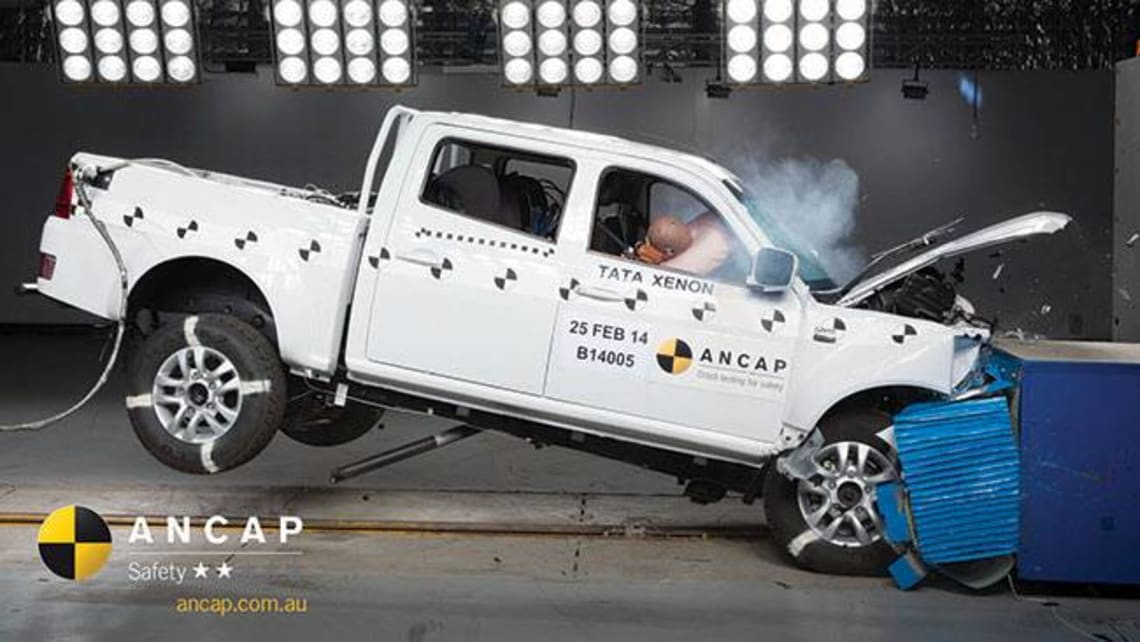
Indian ute criticized for poor safety rating

The Tata Xenon has passed the ANCAP crash test.
The Indian ute received only two out of five stars for crash safety. two Chinese-made Great Walls that received the same bad rating four years ago. The result worried the national security authority, given that more cars will be imported from developing countries in the coming years.
“With the decline of local car production on the horizon, we are sure to see a number of new models coming to our shores from emerging markets,” said Lochlan McIntosh, chairman of the Australasian New Car Assessment Program.
ANCAP is a not-for-profit, independent organization funded primarily by highway, highway, and automotive services in every state and territory. "ANCAP will monitor this and ensure that the safest vehicles are offered to motorists," Mr Mackintosh said.
Tata Xenon came out, which went on sale in October last year, was the fourth vehicle to receive such a low safety score in the past five years. The only vehicle that has received a rating below two stars during this time is yut Proton Jumbuck made in Malaysia, which received only one star when tested in 2010.
The ANCAP stated that the Tata ute "performed fairly well" in a frontal offset crash test, but was penalized for its lack of stability control, which can prevent skidding in corners, and is considered the next life saver after the invention of the seatbelt.
Stability control technology has been mandatory for passenger cars sold in Australia for the past two years, but has yet to become mandatory for commercial vehicles. ANCAP also noted that the Tata Xenon lacks side and curtain airbags; most new cars now on sale come with at least six airbags as standard.
Tata Motors Australia Managing Director Darren Bowler said: “We are confident that the safety record will improve with the introduction of updated stability control models in the coming months. If you look at the occupant protection rating in isolation, Xenon ute already performs better than many established brands.”
Only 100 Tata Xenons have been sold in Australia since last October. An updated range with stability control should appear in the middle of the year. The Tata ute line starts at $20,990, but the model tested was a double cab that costs $23,490 and has a reversing camera as standard to help boost the safety score.
ANCAP crash tests are conducted at a higher rate than federal government requirements, but they have become the default standard internationally and are credited with greatly improving vehicle safety over the past 10 years. The occupant protection rating is measured after a car crash at 64 km/h. In order to test the structural integrity of the car and ward off a frontal collision, 40 percent of the frontal area (on the driver's side) hits the barrier.
Five-star safety ratings, crash test compensation
Ford Ranger ute 15.72 out of 16 - October 2011
Mazda BT-50 ute 15.72 out of 16 - December 2011
Holden Colorado ute 15.09/16/2012 - July XNUMX
Isuzu D-Max ute 13.58 out of 16 - November 2013
Toyota HiLux ute 12.86 out of 16 - November 2013
Four star safety
Nissan Navara ute 10.56 out of 16 - February 2012
Mitsubishi Triton ute 9.08 out of 16 - February 2010
Two star safety
Tata Xenon ute 11.27 of 16 - March 2014
Great Wall V240 ute 2.36 out of 16 - June 2009
One star safety
Proton Jumbuck ute 1.0 of 16 - February 2010
This reporter on Twitter: @JoshuaDowling